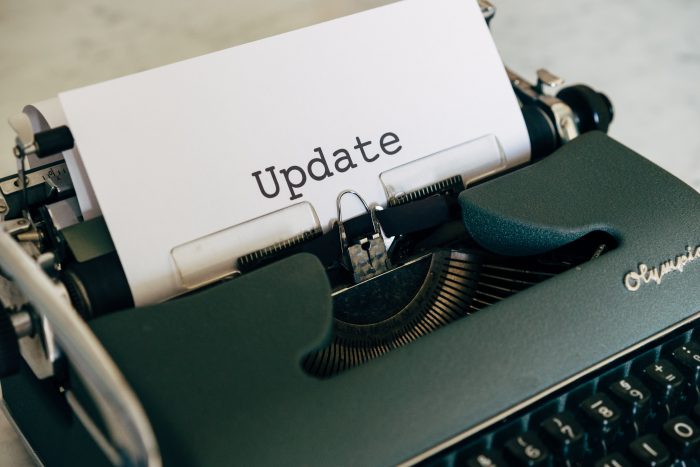OMHSAS Provides Updated Telehealth Guidance


The rate of emergency departments (ED) visits for bicycle-related traumatic brain injuries (TBI) and concussions decreased by almost half (49%) among children, but only by 6% among adults between 2009 and 2018 according to a new report in CDC’s Morbidity and Mortality Weekly Report.
Key findings from the report, “Emergency Department Visits Due to Bicycle-Related Traumatic Brain Injuries Among Children and Adults — United States, 2009-2018,” also show that:
Bicycling is a great physical activity and is growing in popularity among Americans. Findings in this report highlight the need to expand effective bicycle safety interventions such as improving compliance to traffic laws, helmet use and bicycling infrastructure. These can help children and adults enjoy the benefits of bicycling and stay safe from injury, including TBIs.
Additional Information:

The Centers for Medicare and Medicaid Services (CMS) published an interim final rule with comment period (IFC) in the May 13, 2021 Federal Register that revises the infection control requirements that long-term care (LTC) facilities and intermediate care facilities for individuals with intellectual disabilities must meet to participate in the Medicare and Medicaid programs. The goal of this IFC is to reduce the spread of COVID-19 by requiring education about COVID-19 vaccines for LTC facility residents, ICF-IID clients, and staff serving both populations, and by requiring that such vaccines, when available, be offered to all residents, clients, and staff. It also requires LTC facilities to report COVID-19 vaccination status of residents and staff to the Centers for Disease Control and Prevention (CDC). These requirements are necessary to help protect the health and safety of ICF-IID clients and LTC facility residents. In addition, the rule solicits public comments on the potential application of these or other requirements to other congregate living settings over which CMS has regulatory or other oversight authority. The regulations are effective on May 21, 2021; however, comments will be accepted but must be submitted by 5:00 pm on July 12, 2021 to be assured for consideration.
The Employment First Community of Practice webinar on “Value, Outcome and Performance-Based Payment Methodologies to Advance Competitive Integrated Employment in State Medicaid Long-Term Services and Supports (LTSS) Systems and Managed Care LTSS Systems” is available for viewing in the archives. The webinar presents examples of state Medicaid LTSS systems, some that are using managed care and some that are not, that have designed and implemented value-based purchasing and outcome-based reimbursement methods to advance Employment First and Competitive Integrated Employment.
Visit here to view “Value, Outcome and Performance-Based Payment Methodologies to Advance Competitive Integrated Employment in State Medicaid Long-Term Services and Supports (LTSS) Systems and Managed Care LTSS Systems.”
From ANCOR:
Happy Friday, ANCOR Members! Two months after President Biden signed the American Rescue Plan into law, CMS finally released its guidance to states on the 10% FMAP bump dedicated to HCBS. We are still analyzing it carefully, but initially it appears that stakeholder input was carefully considered. Of immediate significance:
Below is an overall summary of the full guidance:
Since the beginning of the pandemic, ANCOR alongside our disability partners has worked tirelessly to address those needs – finding new ways to deliver services and increase capacity, ensuring the needs of people with disabilities have been considered at every step of the COVID-19 response, and ensuring that the magnitude of the needs are understood.
As a result of that advocacy, the American Rescue Plan Act of 2021 (ARP) included several provisions to help address these unmet needs. One of them is a temporary, but significant, increase in federal funding for home and community-based services (HCBS). Specifically, states can receive a 10 percentage-point increase to the federal medical assistance percentage (FMAP) they receive for certain Medicaid expenditures for HCBS. This “FMAP bump” is available for one year, from April 1, 2021 to March 31, 2022.
In a letter to State Medicaid Directors issued Thursday, the Centers for Medicare & Medicaid Services (CMS) provided states with guidance for receiving the funding. The letter provides more precise details, but services and activities can be provided through a variety of different Medicaid HCBS programs, and a wide variety of services and supports that both older adults and people with disabilities rely upon are eligible. For example, states can claim additional federal funds for:
Additional funding also can be used for a range of activities that help increase community living options. The following are just a few of the many examples described in CMS’ letter:
(Note that services paid for through administrative match, such as those offered through the Long-Term Care Ombudsman program and certain No Wrong Door program activities, are not eligible.)
An important condition for receiving this funding is that states cannot decrease their own funding of HBCS. In other words, states cannot use the additional federal funding instead of state funds; the funds must be used in addition to the state’s own investments. They also may not cut HCBS services during this time. That means states may not eliminate covered services or reduce the amount, duration or scope of those services. In addition, they may not impose stricter eligibility requirements for HCBS programs and services than were in place on April 1, 2021 or reduce provider payments.
***States can contact HCBSincreasedFMAP@cms.hhs.gov if they have questions about the services which can claim the increased FMAP.
——————————
Shannon McCracken
Vice President of Government Relations
ANCOR
606-271-3555
——————————
The Senate Aging and Youth Committee has announced an upcoming public hearing on Thursday, May 20, 2021 at 11:00 am. This public hearing will focus on the current status and needs of long-term care facilities one year after COVID-19. This hearing will be live streamed and will also be archived for future viewing.
